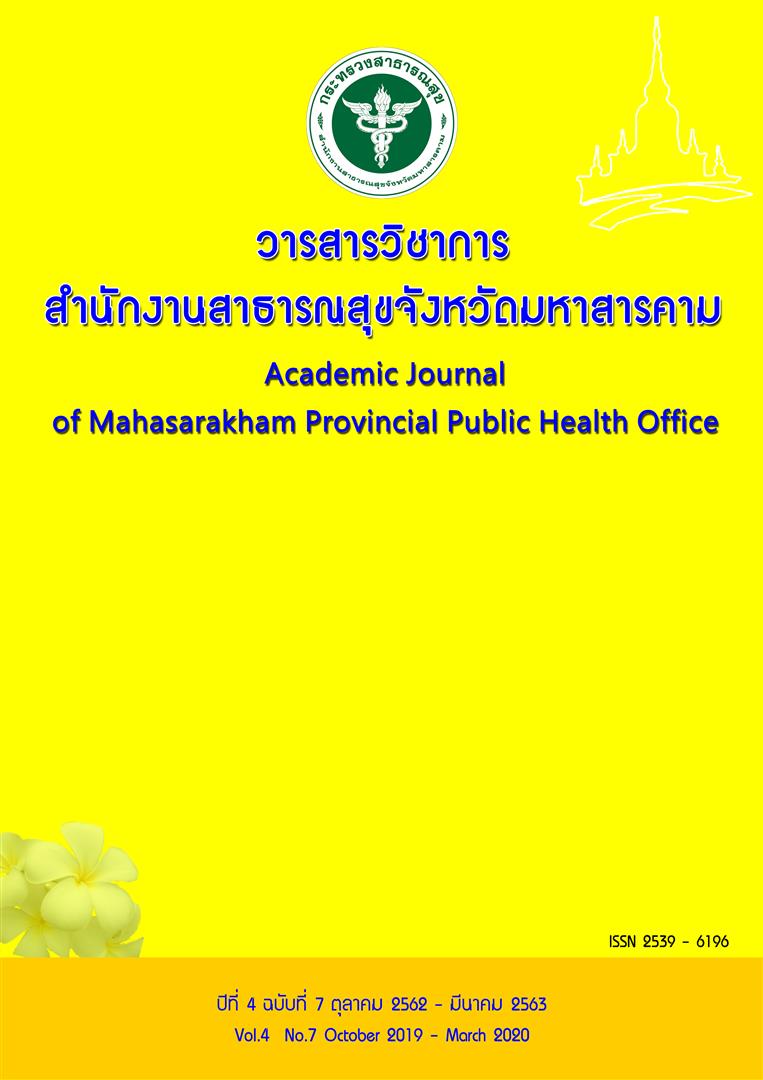การพัฒนารูปแบบการมีส่วนร่วมในการแก้ปัญหามารดาวัยรุ่นของภาคีเครือข่ายตำบลโคกก่อ อำเภอเมือง จังหวัดมหาสารคาม The development of the participation model in solving the problem of adolescent mothers of Khok Kho Subdistrict Network, Mueang district, Mahasarakham Province
Abstract
Abstract
Teenage pregnancy is a significant problem in Thailand affecting health, society, and economy in terms of complications in both mothers and children, abortion problems, and leaving children, lack of income, and broken family. There were such problems in Khok Kho Subdistrict, Mueang District, Mahasarakham Province, and had tried to solve the problem since 2014, but the issue of teenage pregnancy has not decreased.
Objective: 1) To study the context and situation of teenage pregnancy, 2) To develop the participation model in solving the problem of adolescent mothers, and 3) To evaluate the developed model.
Methods: The study used an action research design. The target group consisted of one hundred fifteen participants, including teenage leaders, teachers, village health volunteers, parents, community leaders, health care providers, president of the Tambon Administrative Organization, and staffs were working with adolescent problems, persons in charge of pregnancy work in District Public Health Office, and adolescent mothers. The study was divided into three phases, as follows: Phase I situational analysis; Phase II model development; Phase III model implementation and evaluation. The tools used in data collection composed of an in-depth structural interview, observations, and recording workshop. Data were analyzed using mean, rate ratio, and content analysis.
Results: Phase I, there were increasingly teenage mothers during the years 2014 - 2016 rates of 32.7, 37.8, and 45.9: 1,000, respectively. The causes of adolescent pregnancy were the lack of knowledge in preventing pregnancy, mistakes in contraception use, lack of communication in the family about sexual prevention, inaccessibility to contraceptive services, and pregnancy counseling. The impacts that happened to adolescent mothers were the lack of educational opportunities, unemployed, and lack of income due to being a child, family quarreling, and divorcing. Phase II, the model was established in four components, including 1) problem identifying and network motivation for working together, 2) sharing about knowledge, resources, commitment, and plan, 3) connection by using the center of health-promoting hospitals, and 4) admiring for achievement. Phase III, there were better outcomes; the teenagers had more awareness of the teenage pregnancy problem and could access more services for sexual protection. The rate of teenage pregnancy decreased. In particular, there was a mutual network involving youthful collaboration for prevention and problem solving of teenage pregnancy.
Conclusion: The developed model could prevent and solve adolescent maternal problems in Khok Ko Subdistrict, Maha Sarakham Province. It could apply in other contexts by creating awareness among people in the community using recognizing information, create engagement for ownership, and taking lessons learned to ensure continuity in development.
Keywords: participation model, adolescent mothers, networks


